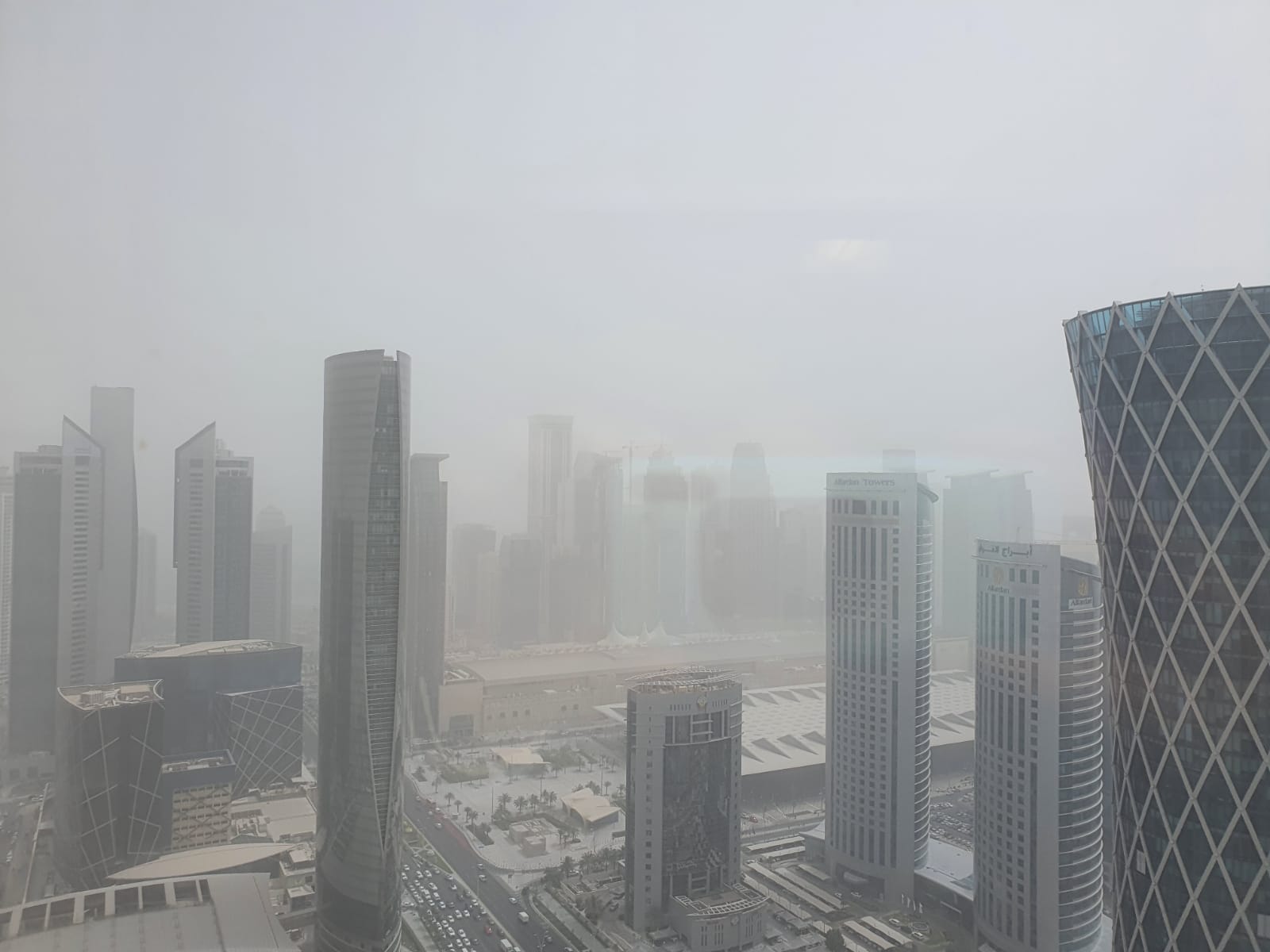A series of back-to-back sandstorms have hit several Gulf countries in the past few months, disrupting daily life and raising alarm.
A series of hefty sandstorms have draped several countries across the Gulf and Middle Eastern region, causing at least one death in Iraq and three in Syria.
On Monday, Kuwait, Saudi Arabia and Qatar’s meteorology centres warned of a series of sandstorms that exceed 55 km/h— forcing people to stay indoors to avoid driving with no clear vision.
Saudi Arabia’s meteorological association predicted that visibility on the highways in the capital Riyadh would even hit zero. This month alone, the storms sent 1,285 patients to the emergency rooms in the kingdom for ‘trouble breathing’ complaints.
Within this week, yet another sandstorm has engulfed Iraq, Syria, and Iran, sending some people to hospitals and disrupting several flights due to the wind.
The warnings are the latest of many due to a series of unprecedented nearly back-to-back sandstorms that hit the region this year, bewildering residents and disturbing the daily lives of many.
Some experts and officials have come forward to attribute the storm to climate change, calling for “urgent” environmental measures to be put in place.
In Qatar, residents woke up on Tuesday to bright orange skies and a thick veil of grit across the nation, with some stating that they had “absolutely no vision” while driving in the morning.
The weather conditions are expected to last till Tuesday morning and will see visibility reduce to less than 2km in some areas, authorities on Monday said.
On Tuesday morning, the weather department said poor visibility “is still on-going.”
It is still unclear when the sandstorm will depart.
Fueled by seasonal winds, sandstorms are common in late spring and summer. However, since March, they have occurred practically every week in several countries around the region.
Qatar, specifically, witnessed a couple in the last month alone.
Neighbouring country Kuwait said that May has seen the highest number of sandstorms in a 30-day period in 25 years. Kuwait suspended all flights on Monday for the second time this month because of low-visibility from the dust.
Despite the shocking GCC numbers, Iraq and Syria were hit the hardest. In Iraq, the wind was so strong, forcing authorities to designate the day a national holiday and urging all citizens and employees to stay at home as the country faced its tenth storm in the last two months.
Last week, Iranian capital Tehran shut down schools and government offices due to the wind, which struck worst in Khuzestan, the country’s southwest desert area.
Over 800 individuals flooded the hospital’s emergency rooms seeking treatment for breathing problems. Meanwhile, hundreds of flights were canceled or delayed in western Iran.
The country’s health ministry also stocked up on oxygen canisters at facilities in the hard-hit districts, according to a statement.
Thousands of people have been rushed to hospitals as a result of the storms region-wide.







